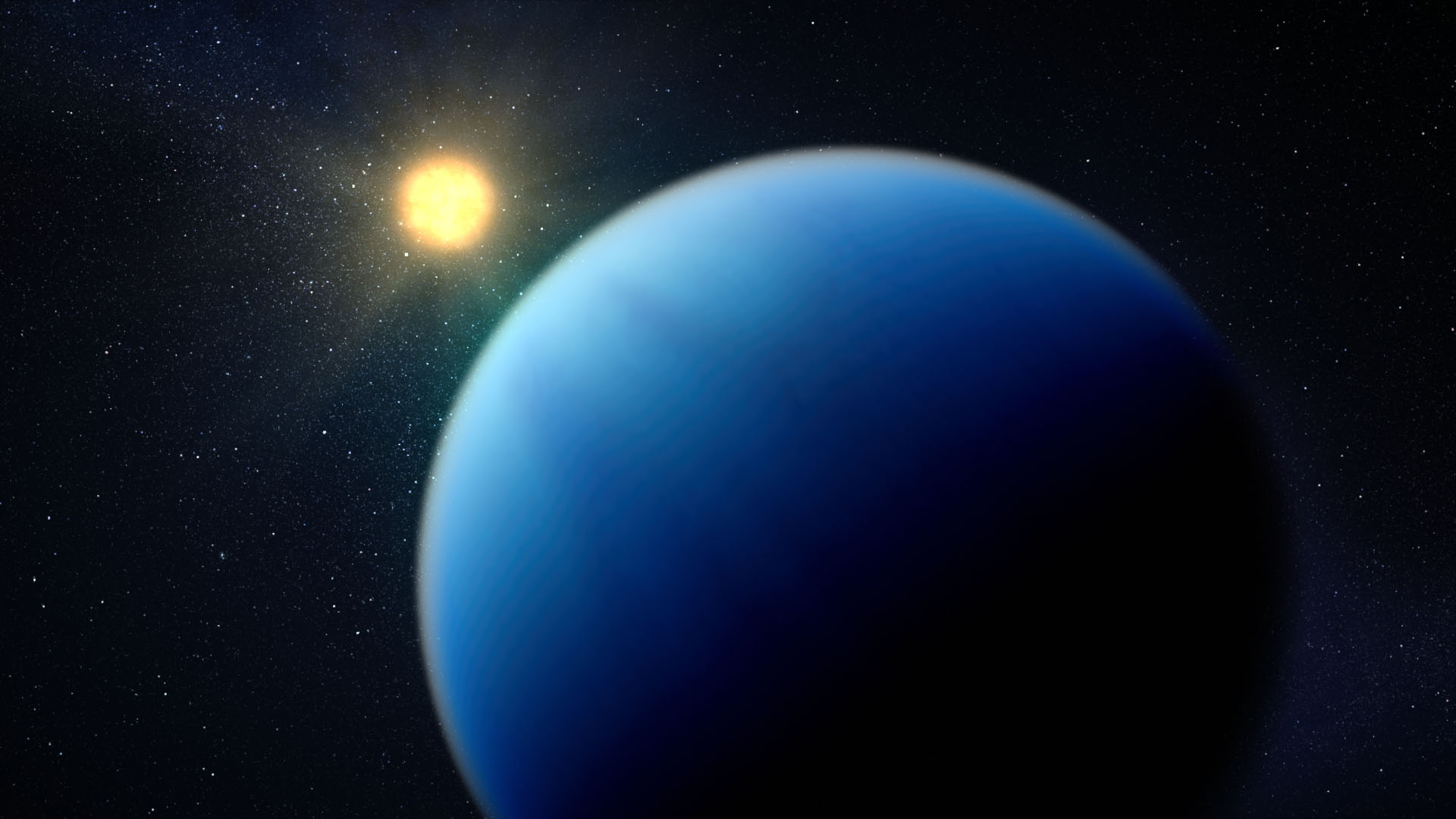STScI: Webb Primed to Lift the Haze Surrounding Sub-Neptunes

Illustration of what exoplanet TOI-421 b might look like. TOI-421 b is a hot sub-Neptune-sized exoplanet orbiting a Sun-like star roughly 244 light-years from Earth. TOI-421 b is thought to have a clear atmosphere free of haze and clouds. Credits: ARTWORK: NASA, ESA, CSA, Dani Player (STScI)
More than half of the Sun-like star systems surveyed in the Milky Way harbor a mysterious type of planet unlike any in our own solar system.
Larger than Earth, smaller than Neptune, and orbiting closer to their stars than Mercury orbits the Sun, these warm-to-hot sub-Neptunes are the most common type of planet observed in the galaxy. But although researchers have been able to measure basic properties – including size, mass, and orbit – of hundreds of these planets, their fundamental nature remains unclear.
Are they dense, Earth-like balls of rock and iron, blanketed in thick layers of hydrogen and helium gas? Or less dense mixtures of rock and ice, surrounded by steamy, water-rich atmospheres? With limited data and no planets of similar size and orbit in our own solar system to use for comparison, it has been difficult to answer these questions.
“What are these planets? How do they form? Why doesn’t our solar system have them? These are fundamental questions,” explains Jacob Bean, an astronomer at the University of Chicago who has led numerous observations of exoplanets.
The Haze Problem
The key to figuring out what sub-Neptunes are made of and how they formed is examining their atmospheres. But getting a clear view has not been easy.
The most effective method of analyzing exoplanet atmospheres is a technique known as transmission spectroscopy. When the planet is transiting its star, some wavelengths (colors) of starlight are filtered out by gases in the planet’s atmosphere. Because each type of gas has a unique “signature,” or set of wavelengths that it absorbs, it’s possible to figure out what an atmosphere is made of based on patterns in the transmission spectrum.
This technique has been successful for many exoplanets, but not for most sub-Neptunes. “There have been very few atmospheric observations of sub-Neptune planets,” explains Eliza Kempton of the University of Maryland, College Park, who specializes in theoretical modeling of exoplanet atmospheres. “And most of those have been dissatisfying in that the spectra have not revealed much in the way of spectral features that would allow us to identify the gases in the atmosphere.”
The issue seems to be aerosols, tiny particles and droplets that make up clouds or haze. These particles scatter starlight, eroding the prominent spectral peaks into subtle undulations and rendering the spectrum virtually useless in terms of determining gas composition.
But with Webb, researchers are confident that a much clearer view of sub-Neptunes is on the horizon. Two observation programs co-led by Bean and Kempton and scheduled for the first year of Webb operations will use Webb’s uniquely powerful capabilities to probe two sub-Neptune-sized planets: GJ 1214 b, the archetype sub-Neptune; and TOI-421 b, a more recent discovery.
